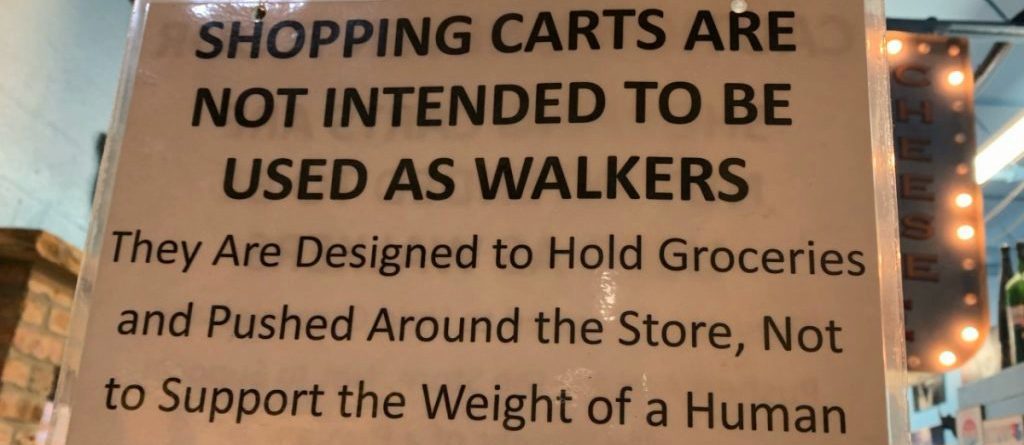What is Empathetic Information Literacy?
Empathetic Information Literacy is a method of information literacy that consists of five moves:
- Pausing before accepting or rejecting a claim
- Asking questions about the claim, especially about whether it’s true
- Caring about the people involved
- Checking the accuracy of the claim through credible sources
- Acting on what you learn
The goal of Empathetic Information Literacy is to better verify or “fact check” claims through attending not just to intellectual factors but also to affective factors—not just thoughts but also feelings.
Writers, speakers, knowledge workers . . . may practice Emphatic Information Literacy in order to resist misinformation and “fake news.”
Key Concepts: Openness; Rhetorical Analysis; Mindset; Metacognition; Logical Fallacies; Fake News: an Undergraduate Writing Course
Practicing Empathetic Information Literacy means working to sort out the truths and falsehoods we encounter in our lives while aware we are not disembodied thinking machines but whole human beings. We have guts and brains, thoughts as well as feelings. These different facets of being human affect each other, and we can account for that in the methods we use to check the accuracy of information we come across.
We probably all already know that our emotions can cloud our judgment, that our feelings can gunk up our thinking. For example, when we’re in love or afraid, we might jump to conclusions about another person—only to rethink things once we’ve calmed down. As an attempt at a solution, some people feel tempted to somehow shut down their feelings and “just think rationally.” But that is not actually possible. In Teaching Readers in Post-Truth America, the scholar Ellen C. Carillo explains that, according to psychological research, “reason and emotion” are “truly entangled” (47). Because of how our nervous systems are wired in our bodies, it is inescapable that how we feel influences how we think and vice versa. While our thoughts and feelings do not have to completely determine each other, they can’t completely escape each other either. More importantly, even if we could shut down our feelings, it would not be a good idea because, handled well, emotions can help our thinking a great deal. For example, even as feeling afraid or infatuated can prompt hasty conclusions, so too can feeling safe and secure allow us to step back and rethink.
Since our emotions are always part of our thinking, we can use them. We can build feeling and attention to our embodied experience into the thinking process. The poet Scott Cairns gets at something like this one of his poems. He writes:
let’s try something, even now. Even as
(Slow Pilgrim, 183)
you tend these lines, attend for a moment
to your breath as you draw it in: regard
the breath’s cool descent, a stream from mouth
to throat to the furnace of the heart.
Observe that queer, cool confluence of breath
and blood, and do your thinking there.
Although in this poem Cairns happens to be writing about spirituality, we can apply his insight more broadly. We can bring our minds and hearts together. We can make even research and writing and critical thinking acts of feeling, care, or love. That’s what “Empathetic Information Literacy” is about. It marries concerns of the heart with concerns of the mind. It puts us in touch with feelings and with caring for those human beings who are living actual lives behind what “facts” or “fake news” we may be sorting through.
Empathetic Information Literacy puts us in touch with ourselves as well. It helps us realize when we may be being mindless or heartless. It helps us be more mindful and heart-ful, which is important because we need all the resources we can muster when we are seeking truth—particularly when the truth is complex and when there are people trying to fool us.
Empathetic Information Literacy is a method of research and of critical thinking. It builds on several assumptions:
- that truth exists,
- that truth matters in the lives of human beings,
- that truth is often complex, difficult, opaque, unavailable, uncertain,
- that some people—including ourselves—even try to fool us,
- but also that there are methods for seeking truth anyway, doing our best, doing better than just taking everything at face value or accepting what we’ve been told without question,
- and finally, that seeking truth ought to involve living out the truth we find.
Of course, not everyone agrees with such assumptions. In the book Truth: A Guide, the philosopher Simon Blackburn traces some of the extended, complicated debates that there have been over truth—what truth is, whether it exists, whether it can ever be determined with any reasonable degree of certainty. Some people reject the idea of truth altogether, while others feel that truth is generally clear and obvious. Still others throw their hands up, finding the whole matter impossibly complex. But Empathetic Information Literacy attempts to avoid both “simplistic relativisms” and “simplistic absolutisms” (Blackburn xii). While Empathetic Information Literacy may not be much use in proving Absolute Truth, it can offer a lot to those who believe that there are meaningful, practical differences between accuracy and inaccuracy and that it is often possible to navigate these differences in our lives.
The specific method of Empathetic Information Literacy includes five moves that we can make once we encounter a claim we want to look into. We can pause, ask questions, care about the people involved, check the facts as best we can using credible sources, and then act based on what we learn. Although these moves are arranged in a decent order, the order is not rigid. It’s probably best to think of the method as a dance, where you do all the steps over and over while moving across the dance floor.
Move 1: Pause
The jump-to-conclusions part of our brains and bodies works faster than the think-things-through part. Emotions we’re having but not paying attention to can shove us in directions we might not otherwise choose. Our first instincts might be more a matter of what’s habitual or familiar or appealing rather than a matter of what’s true. So the first thing we should do when we encounter a claim that bears looking into is to pause.
This pause is a physical, intellectual, and emotional activity. It could even be a spiritual activity. At the most basic level, all it takes is that we wait a few moments before responding—or in the midst of responding if we decide to pause later on, either because we forgot at first or because we need another pause.
In practical terms, we can pause by taking a few deep breaths. We could remind ourselves of the value of wisdom, discernment, and humility. If we need a bigger pause, we can take a walk or sleep on it. We might need to just step away for a bit and do other things and then come back with a fresh mind. We could journal to ourselves about why we want to think well. We might need to ask a friend to talk us down from the peak of our fervor.
Pausing is about getting ready to engage well. In all honesty, depending on the difficulty of the topic and our relationship to it, there could be times when we need to pause for years before we’re ready to engage with a given issue.
Move 2: Ask
So often we launch into “That’s true!” or “That’s not true!” immediately upon encountering a claim. The pause allows us space to make this second move: turn the claim into a legitimate, honest question—a question that, even if you think you know the answer to, you are willing to investigate. We can do this simply by asking: “Is that true?” This question can focus our efforts. It can help us stay on track. And it can make sure we consider a range of possibilities, not just our first instinct. The answer could be: yes, no, maybe, unsure, probably, unlikely, mixed.
Although I say we can complete this move “simply” by asking, I will add that sometimes it takes a little work to understand exactly what claim is being made or implied that we want to ask about, especially if claims are being insinuated or if many claims are being stacked on top of each other or mixed together. So sometimes part of asking is sorting out just what to ask. Additionally, any good question, once we start digging into it, can lead to all sorts of other questions we hadn’t even considered. We can—and should—spend a lifetime asking questions.
Move 3: Care
So often we think about critical thinking as merely about, well, thinking. Debates and investigations about what’s true and what’s not can become something that’s strictly a mind game. Facts vs. falsehoods. The thing is, though, we cannot avoid feeling. One feeling, for instance, that often distorts the truth is our desire to “win” or “be right.” Even if we feel we’re being completely rational, we are not.
But we can use our emotions to motivate us to find the truth. We can do this, most powerfully, by finding the human beings and stories behind the question we are investigating. It’s easier to set aside our desire to “win” or “be right” when recognize the lives and experiences that are on the line. When we see the faces, or hear the voices, or imagine the hopes and joys, fears and sorrows of the people behind the situation, we can draw on that as motivation to set our own agendas aside and do our best to really find out what’s true. When we care about people, truth is no longer a game we try to win.
Move 4: Check
Once we have paused and decided what we’re really asking about and made sure we actually care to find out the truth, then it’s time to do the actual checking. Here is where you apply the established critical thinking and research tools of “information literacy” to sort out truth, lies, and all that lies between, to the best of your ability.
Check the source that the claim you’re investigating appears in. Check the credentials or qualifications of the person making the claim. Check the facts. Check the evidence. Check for logical fallacies. Check for possible bias. Check for “truth distorting strategies” (ways of thinking or communicating that tend to distort things). Check for “truth sorting strategies” (ways of thinking or communicating that tend to get to the bottom of things accurately).
To accomplish these things, some specific questions might include:
- What is the source? Who is making the claim? In what venue? Does the source—the writer or speaker and the place of publication—have an established history of following truth sorting strategies?
- What truth sorting strategies lend credence to the claim? Is the writer or speaker asking questions, considering multiple perspectives, drawing on credible sources, making accurate statements, peeling back and looking behind common assumptions, carefully weighing competing evidence, looking at things in context, admitting when things are uncertain, and so forth?
- What truth distorting strategies might be at work to watch out for? Is the source outright lying, making irrational claims, getting the facts wrong, oversimplifying, distorting a little, using fear, making claims without evidence, failing to cite credible sources, ignoring alternative perspectives, practicing demagoguery (making it all about us/them, rather than about what’s true), using logical fallacies, falling for cognitive biases, confusing opinion for facts, and so forth?
- What are other sources saying? Does the source of the claim contradict other sources? What can explain the difference? Is the claim something that most other credible sources agree on? Disagree on? Is this a “settled” question? Or is this a question on which there are still multiple legitimate views?
- What is most likely to be true? Asking the above questions is not infallible. You can do your best to fact check things and still get fooled. In fact, sometimes you will have to be an expert in a field yourself in order to do some really thorough fact checking. But you are still responsible for doing the best you can. So once you have done so, you will want to ask yourself what your verdict is at this point. Is the claim you’re investigating true? False? Mixed? Uncertain? It is often important to keep your decision tentative, as in “This is my conclusion for now” or “This is my conclusion based on the evidence available so far.” Should things change, should new information or perspectives arise, you can revisit the whole process of checking.
Move 5: Act
Not all things you investigate need to be acted upon. Sometimes it’s enough to know the truth. But if you never act on the truth, then you’re missing something. Knowledge for its own sake does have value. But it should not replace knowledge to use in the world. So the last move in this process is to respond to the issue as truthfully as possible—with truth in the holistic sense, beyond just facts. Perhaps the action you take is to commit to continue researching. Perhaps the action is to share what you’ve learned with others. Perhaps the action is to change some personal behavior of yours. Perhaps the action is to donate to or join an organization working on the issue.
Conclusion
These five moves comprise the “method” of Empathetic Information Literacy. But they are more than that, too. They are habits of heart and mind that, I believe, can make us better people. At least, I know that I would rather live in a world full of people who know to pause before jumping to conclusions, who ask questions about things, who genuinely care about what’s true and what’s not because they genuinely care about people, who practice the tools of fact checking well, and who who know how to act on what they learn. In other words, the methods we use to search for truth—and even the desire to search for truth to begin with—can shape the kind of people we end up being.






















